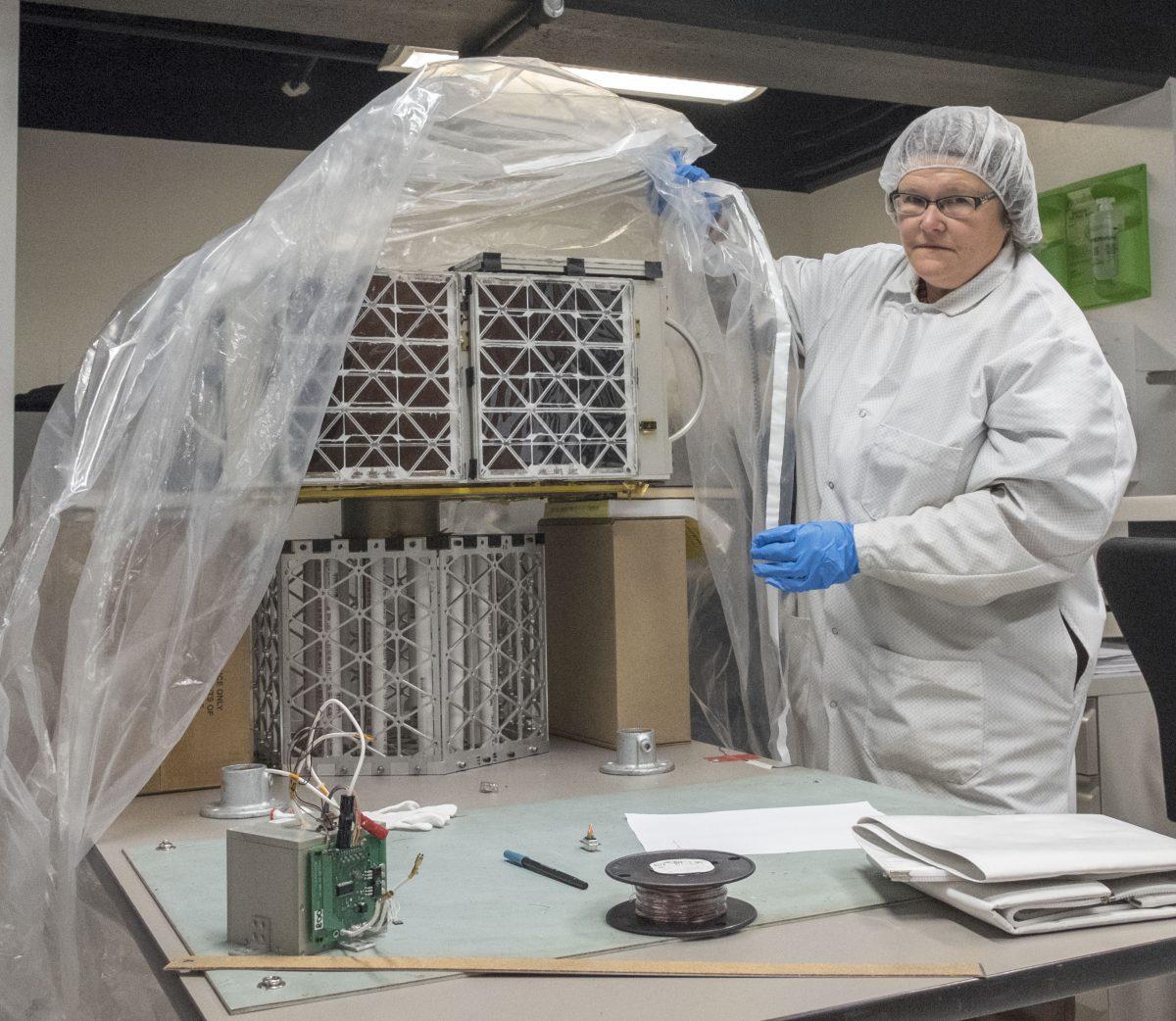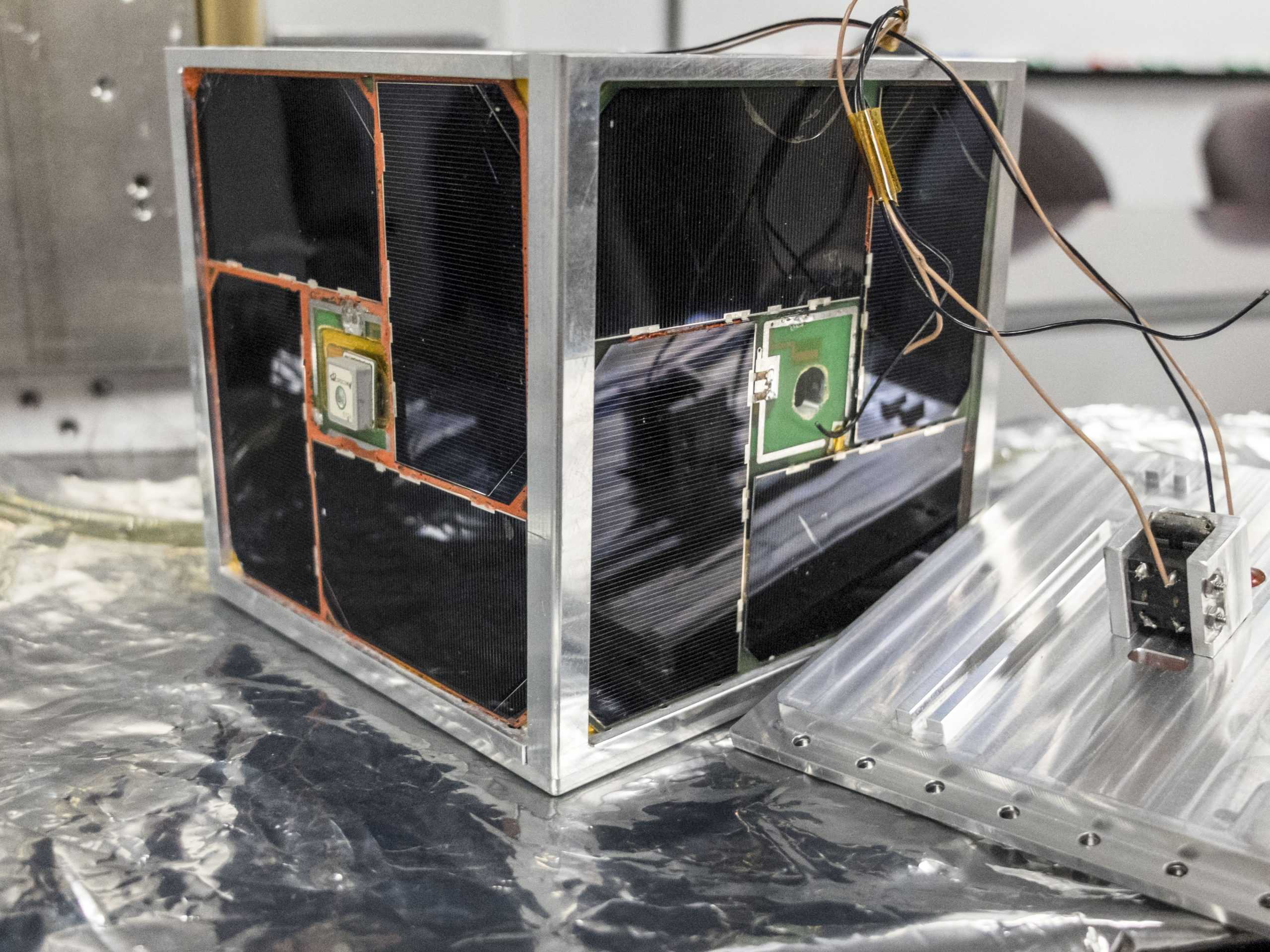Since the Soviets launched Sputnik in 1957, satellites have changed drastically. From objects like the Hubble Space Telescope to those that observe weather patterns or image the earth, satellites fill Earth’s orbit. Now the aerospace industry has turned to develop Cubesats — tiny modular satellites that often weigh less than three pounds.
Cubesats are built from configurations of 10-centimeter cubes, ranging from only one cube to 12 cubes. Thanks to their small size, Cubesats can often reach orbit by launching on a rocket with a different primary mission. Their short mission lengths and relatively cheap cost make them ideal for universities and businesses that want to conduct small experiments cheaply — traits that are quickly finding a niche in the aerospace industry.
This new industry trend has reached Texas A&M’s campus through a student organization that designs, builds and launches cubesats and small-scale satellites. AggieSat Lab is one of the many organizations
that designs, builds and launches cubesats and small-scale satellites. AggieSat Lab is an on-campus organization developing and expanding cubesat usage. The student organization has worked with cubesats since 2005, when it began the design of AggieSat2, a cubesat that launched in 2009.
Helen Reed, A&M aerospace professor and AggieSat Lab director, said the cubes are standardized in design to allow similar components and launching mechanisms.
“So the idea is to come up with satellites that might be more modular,” Reed said. “So that you might be able to use a lot of components off the shelf and you are supposed to be able to create them very quickly.”
Adelyn Destain, aerospace engineering junior and member of AggieSat Lab, said cubesats have become very popular among companies or universities that hope to run relatively short and cost-effective experiments.
“There is a standard to which companies can build components for them, set dimensions,” Destain said. “So they are very easy to build experiments around and then launch into space.”
In addition to the financial gains, cubesats have a number of other advantages over conventional satellites.
“Instead of putting everything on one satellite, you can distribute the capability around to smaller units and launch those units and have them all cooperate, so if one of those fails, it’s not as big a loss as if the bigger satellite had failed,” Reed said. “Moreover, as new technologies come along, you can insert new technologies a lot faster if you have smaller units that you can get up into space.”
AggieSat Lab is currently collaborating with the University of Texas on a project examining the ability of satellites, especially cubesats, to move, operate and interact with each other. The lab has designed and constructed AggieSat4, which will house the UT cubesat, Bevo2. AggieSat4, while small compared to conventional satellites, is too large to be considered a cubesat.
Destain said the eventual objective of the project is to separate the two satellites and then reconnect them, all while in orbit.
“You can think of it like a reverse docking maneuver,” Destain said. “Because the eventual goal of this project is to separate two satellites and bring them back together autonomously in space. So, at this point all we are doing is separating the two satellites and calculating the relative distance between them.”
Reed said AggieSat4 has passed NASA safety tests and is scheduled to launch by December.
“They tested out the procedures for doing the assembly of some of the antennas and things like that once the satellite is up on the space station,” Reed said. “So, AggieSat4 has passed with flying colors and we are just now finishing up some software and we are about to deliver to NASA. Next step is orbit.”
Once in orbit, students working on the project will order the release of Bevo2 from AggieSat4 from ground control at a location on Riverside Campus.
“Students will operate the ground station, track their satellite from the ground, collect the data, command the satellite to downlink the data and then the students will work on the data that comes down,” Reed said. “Students do the whole thing, from cradle to grave, from the concept, through the operations, collecting the data and analyzing the results.”
Reed said the next project will go even further.
“This is a stepping stone from our first launch, which was AggieSat2,” Reed said. “And so we are building up the technologies on this one and then from there the next one will be even more advanced.”











